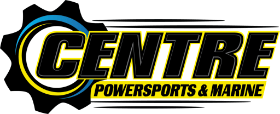UTV Helmets
 A UTV is designed to tackle the toughest terrain without skipping a beat. Conquering nature at high speeds is a blast, but it also poses a safety risk. That’s why every rider needs to wear a helmet for every ride. We’ve created a beginner’s guide to UTV helmets below. If you have questions, stop by Centre Powersports in Sauk Centre, Minnesota. Our friendly staff is happy to help!
A UTV is designed to tackle the toughest terrain without skipping a beat. Conquering nature at high speeds is a blast, but it also poses a safety risk. That’s why every rider needs to wear a helmet for every ride. We’ve created a beginner’s guide to UTV helmets below. If you have questions, stop by Centre Powersports in Sauk Centre, Minnesota. Our friendly staff is happy to help!
Why Helmets Matter
UTVs offer some safety features, like the roll cage and seat belts. But these can lure you into a false sense of security since you still lack key safety features like airbags or safety glass. You need more protection than the UTV provides. As you ride, you are exposed to numerous safety situations where a helmet becomes handy.
First, you could crash. You need protective covering to guard your head during impact. Second, you could get hit as you ride. The open cab exposes you to flying sticks, rocks, and other debris that can be blocked by a helmet. Third, you could smack your head on the UTV interior. All it takes is hitting an unexpected pothole when you aren’t braced for it. A helmet is a safeguard for many different scenarios. As an added bonus, helmets also keep bugs from hitting your face and they reduce wind fatigue (so you can ride longer).
Types of Helmets
There aren’t that many specialty UTV helmets on the market. But they do offer tailored features like extra ventilation for those long rides in the elements or mouthguards to protect your teeth.
While you likely won’t find a helmet created with a UTV rider in mind, you can find a great fit with a general powersports helmet. These fall into a few categories, like half helmets, open face helmets, and full-face helmet. You will want a full-face helmet that covers your entire face, jawline, and chin. These usually come with face shields as well.
As you look at helmets, check out their crash test ratings. These evaluate helmets on four key areas:
- Impact: how well the helmet absorbs shock
- Penetration: how well the helmet stands against a sharp object
- Retention: how well the chin strap stays closed
- Peripheral vision: how well you can see (needs to be at least 105 degrees on each side)
These ratings can come from a government agency (like the Department of Transportation) or from a third-party nonprofit (like Snell). Make sure your helmet rates high!
Comfort and Fit
Fit is the most important part of a helmet. You can actually get better protection from a cheap well-fitting helmet than an expensive helmet that doesn’t fit quite right. Your helmet should be snug - not too tight or too loose. As you move your head around, there should be no wiggle or wobble. If you roll your head forward, your helmet should not be able to slide off. The weight should be evenly distributed to avoid stress on your shoulders and head. Once you have worn a potential helmet for a period of time, check for any soreness or red spots.
You will likely need to try on several options before finding the right fit. It can help to determine your head size and shape ahead of time (which you can find online). This can guide you to certain helmet structures or sizes. As you try on different options, you’ll get a sense of which styles fit best. It’s a process of trial and error, but a worth it one! A great helmet can last you up to five years.
Before you head out on your next UTV adventure, you need all the proper gear and a well-maintenanced vehicle. Centre Powersports in Sauk Centre, Minnesota is your one-stop UTV shop. We offer everything from side by side for sale to repair services. We proudly serve the areas of St. Cloud, Alexandria, and Willmar, Minneapolis so stop by today!

